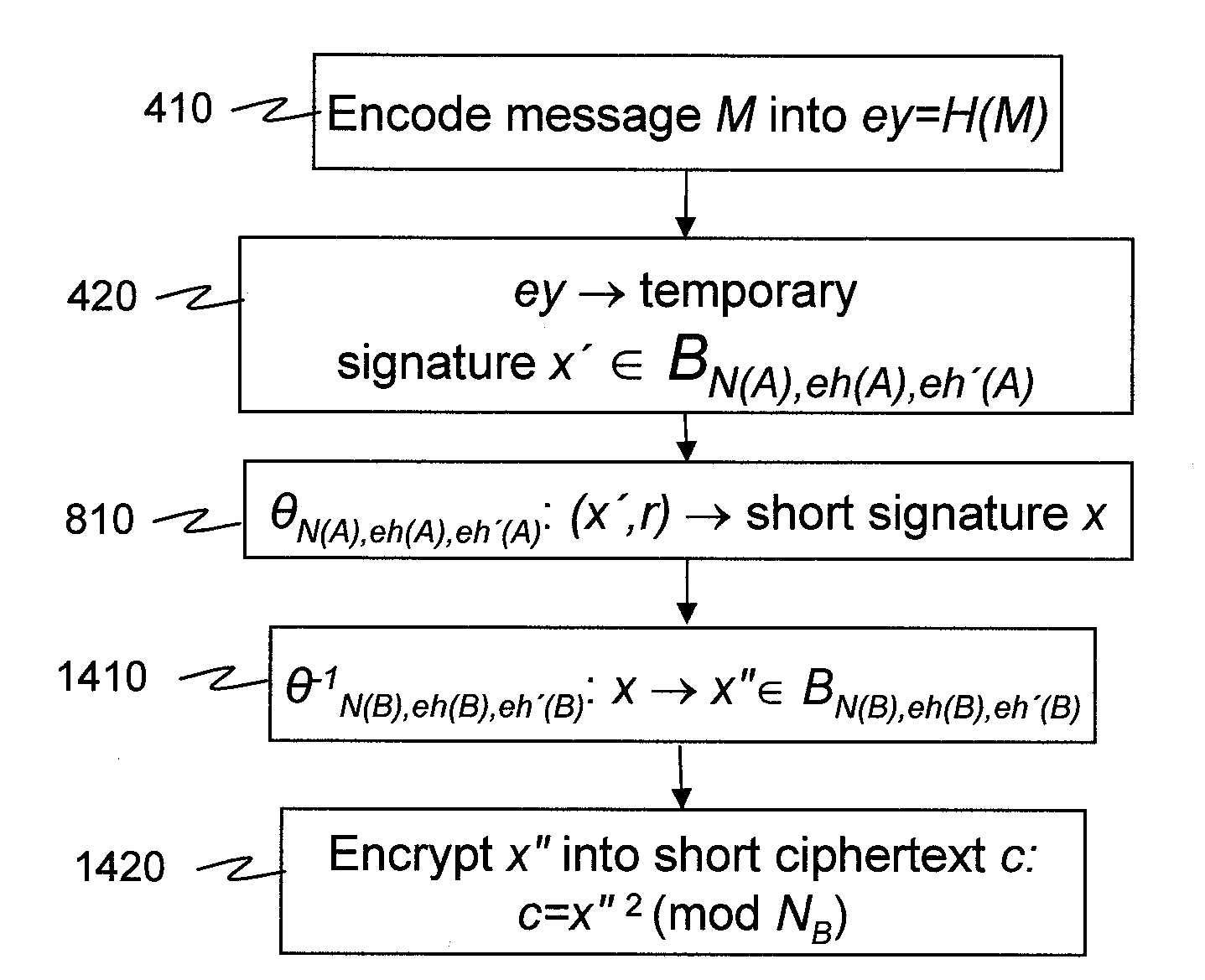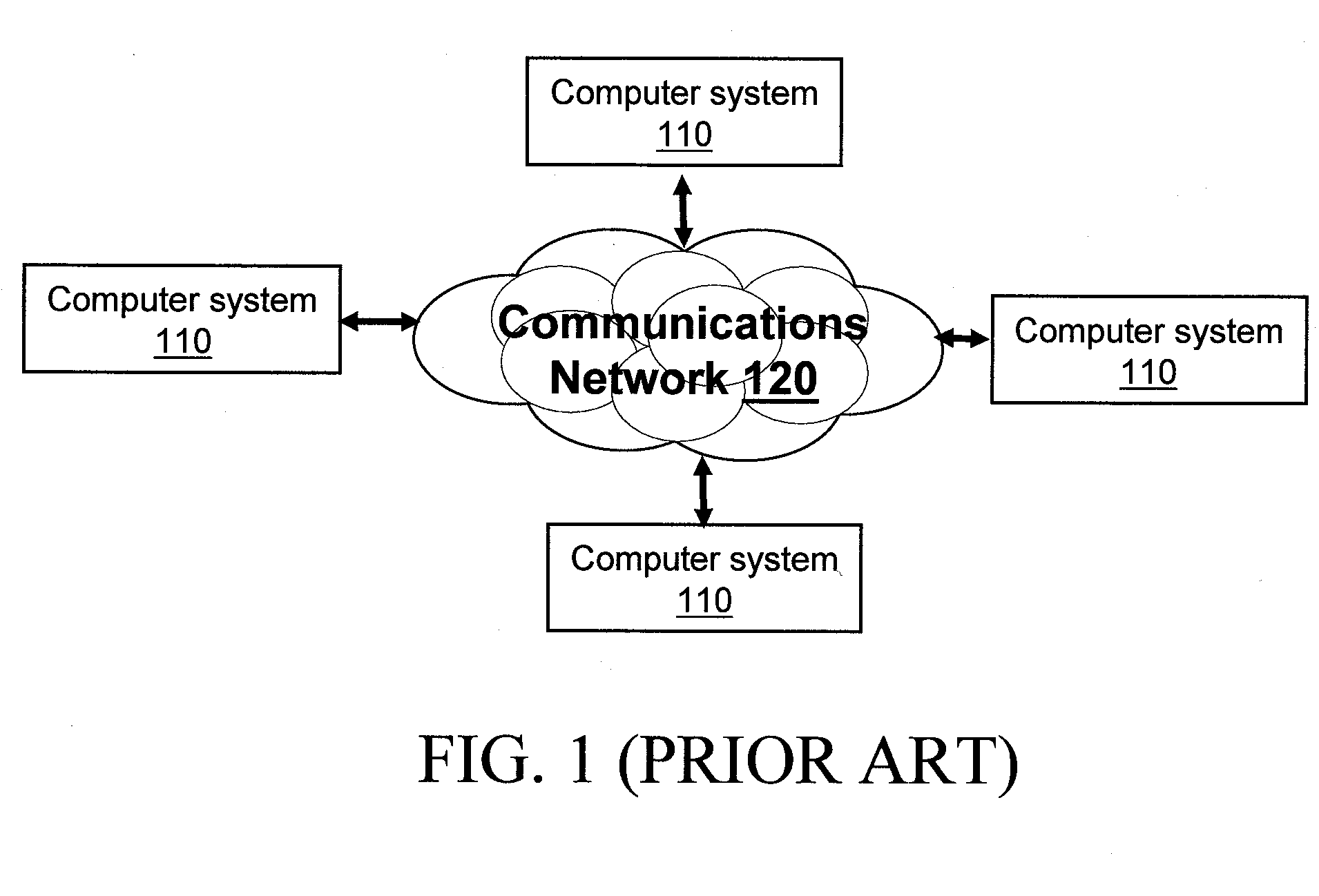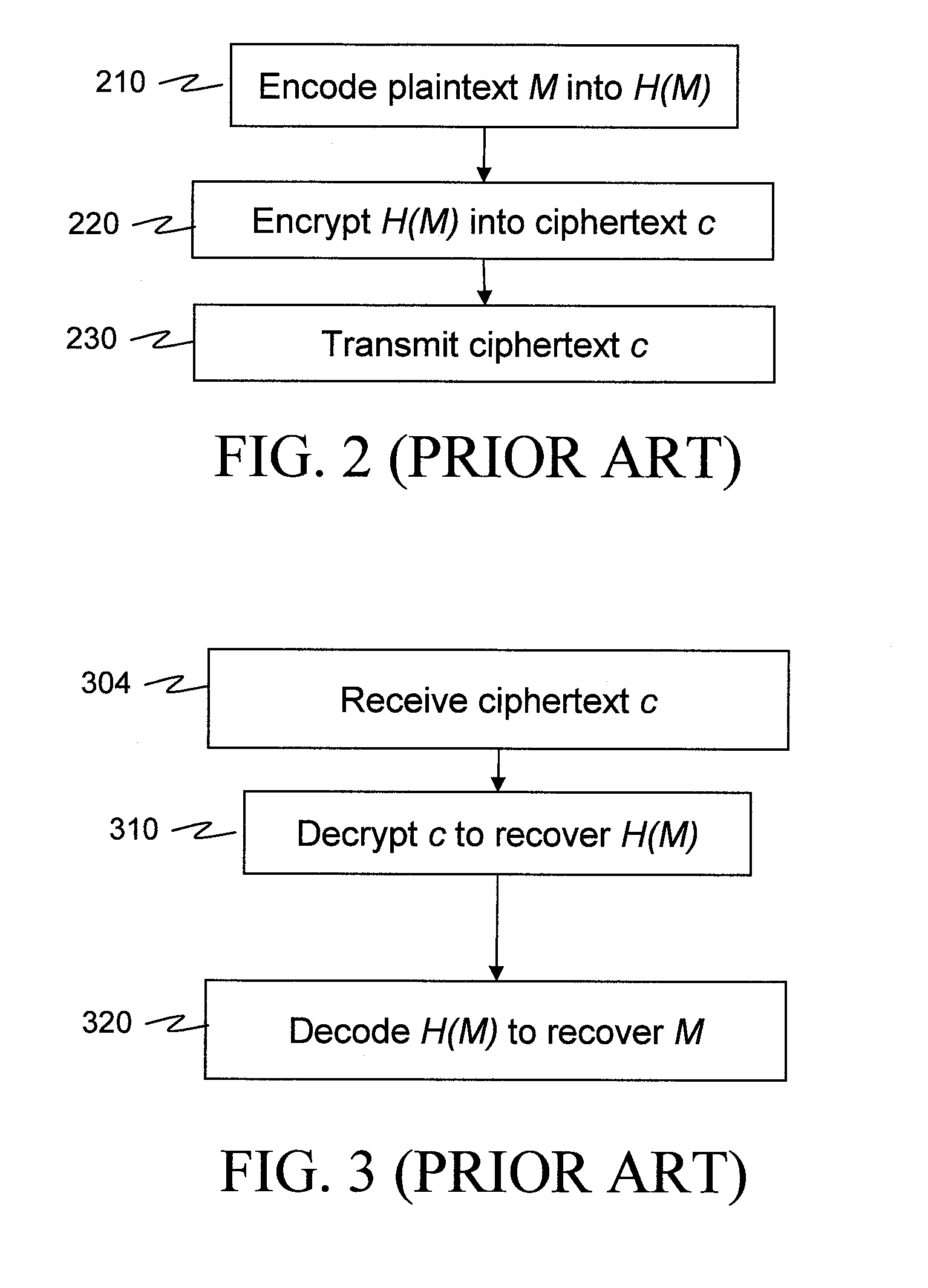Encryption and signature schemes using message mappings to reduce the message size
a message mapping and message technology, applied in the field of encryption and secure communications, can solve the problems of inability to find concrete instantiations, and long ciphertexts and signatures being more likely to encounter packet fragmentation problems, and achieve the effect of rivest-shamir-tauman ring signature scheme and bandwidth-reduced ring signatur
- Summary
- Abstract
- Description
- Claims
- Application Information
AI Technical Summary
Benefits of technology
Problems solved by technology
Method used
Image
Examples
Embodiment Construction
1. Preliminaries
[0103]The subsequent description uses some mathematical notation, much of which is gathered here for convenience. Let {0, 1}* denote the set of all bit strings, and let {0, 1}n denote the set of all bit-strings of length n. The latter expression also denotes the set of all bit strings of a length smaller than or equal to n; if the string length is less than n, the string can be appended with 0's on the left up to the length n. Typically, H will denote a cryptographic hash function and / or an encoded message. Various cryptographic hash functions are well-known in the art—e.g., SHA-1 and MD5 (see e.g. RFC-2104, Request for Comments, Networking Working Group, H. Krawczyk et al., HAMC: Keyed-Hashing for Message Authentication, February 1997, incorporated herein by reference). It is desirable for hash functions to be collision resistant—i.e., it is computationally hard to find m1≠m2 such that H(m1)=H(m2).
[0104]For a real number r, ┌r┐ denotes the ceiling of r, that is, the...
PUM
 Login to View More
Login to View More Abstract
Description
Claims
Application Information
 Login to View More
Login to View More - R&D
- Intellectual Property
- Life Sciences
- Materials
- Tech Scout
- Unparalleled Data Quality
- Higher Quality Content
- 60% Fewer Hallucinations
Browse by: Latest US Patents, China's latest patents, Technical Efficacy Thesaurus, Application Domain, Technology Topic, Popular Technical Reports.
© 2025 PatSnap. All rights reserved.Legal|Privacy policy|Modern Slavery Act Transparency Statement|Sitemap|About US| Contact US: help@patsnap.com



